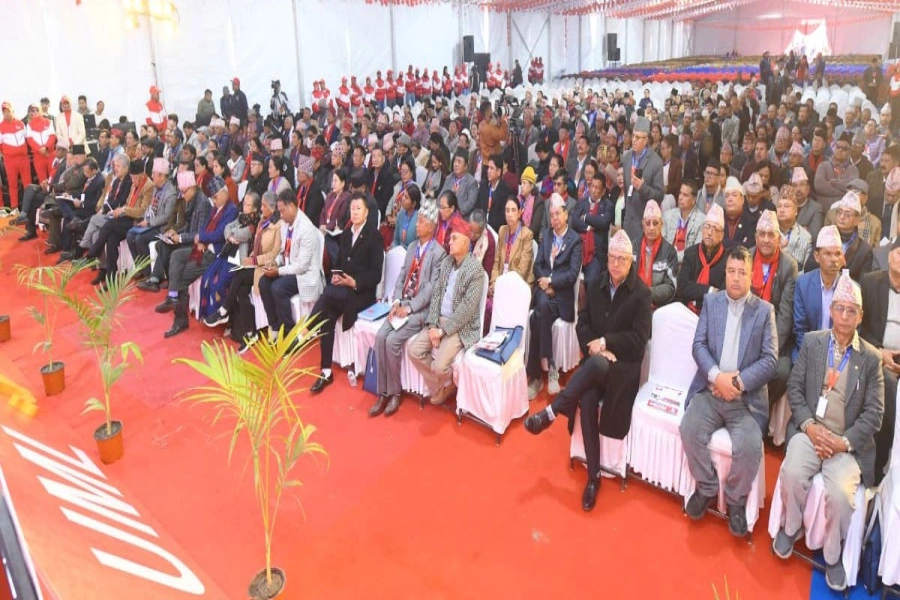Constructing the walls and damp along the riverbanks in the urban areas are supposed to control potential flood, prevention of soil erosion and protecting human settlements and so on. However, implementing such structures must adhere to the international protocols, practices and ecological considerations to ensure they benefit people, animals and the environment.
This article incorporates construction of riverbank walls in Kathmandu's major rivers mentioning the importance of adhering to international protocols and practices for flood control, erosion prevention, and ecological balance. It mainly examines the drawbacks of vertical walls, their impact on biodiversity and flood risk, and suggests sloped, stair-shaped walls for better environmental and community-friendly.
Indeed, Kathmandu Valley Development Authority constructed walls in the riverbanks of major rivers in Kathmandu valley such as Bagmati, Bishnumati, Dhobikhola, Manohara Khola, Tukucha Khola and so on. It is an initiation to manage urban development and mitigate the risk of flooding in the region. While appreciating this project contributing to even corridor roads expansion to help reduce traffic in Kathmandu, there seems to be major weaknesses on its riverbanks wall construction. Consequently, in the monsoon, major rivers in Kathmandu breach its embankment and gush over the corridor's squatter and even residential houses.
Potential Drawbacks of Vertical Walls
Second South Asian Symposium on Microbial Ecology concludes suc...

It is evident that most of the riverbanks walls in Kathmandu valley are constructed at a ninety to almost hundred degree angles might sound straightforward, but it can lead to ecological imbalances and potential risk to flood casualties. Indeed, Vertical walls can increase water velocity at the base which leads to erosion downstream. This can undermine the wall's foundation and negatively impact over adjacent areas.
The vertical walls also obstruct rescue operations, which makes it difficult to rescue flood victims, even if they have strong swimming skills. Children, elderly individuals, and street children are particularly vulnerable to flood hazards, facing significant risks during such events. The sheer vertical walls hinder efforts to exit from the water. For instance, a 13 years old Sajan Ale Magar was swept away from flash flood in a local stream in Samakhushi Kathmandu in 2023. If there had been no slabs over the stream and slope walls along the riverside there could have been chances of rescuing him and it was even possible to get out of the river especially if he had known how to swim.
The vertical walls impact amphibian animals to their ecosystem, limiting access to land for breeding, shelter, and foraging. The vertical walls will be a barrier as it prevents natural movement and fragments habitats and reduces biodiversity. The amphibians and the riverbank's flora and fauna rely on diverse habitats for survival, and vertical walls restrict their ability to their ecosystem. Similarly, there are approximately 100,000 street dogs in Kathmandu, along with other animals like oxen, cows, and monkeys. If floods sweep away these animals, rescuing them becomes challenging and they may struggle to escape on their own, especially with the vertical walls of riverbank at the hazards of flooding.
In a Hindu community, Chhath and Rishi Panchami are celebrated on the banks of rivers and even the Shradda often are held on riverbanks. The vertical walls hinder such sacred rituals to practice witnessing the river water. Despite the fact that Kathmandu's rivers are dirty and polluted, the Hindu Community holds them in high regard like Goddesses or manifestations of divine purity over the river as holy water. The vertical walls are not ritual friendly to the dwellers of Kathmandu.
Bagmati River itself has a long history associated with its religious value for spiritual and ceremonial rituals that comes across the Pashupatinath as it originates from Bagdwar, 15 km northeast of Kathmandu in the Shivapuri hills. Due to its religious value it needs to have been decorated with greenery in the riverbanks making slope walls or stair-shaped walls on both the riverbank sides. This could have potential tourism attractions which would be preferable for recreation for refreshments, morning walks, hangouts, for yoga, relaxation, bird-watching, social hubs for community gatherings and enjoying nature in city environments. It is high time Kathmandu Valley Development Authority constructed a sustainable approach with broader benefits in the riverbanks. Unfortunately, larger areas of the riverbanks have already been developed with vertical walls. Moving forward, it is essential that any remaining construction takes into account slopes having stair walls for better accessibility and environmental integration.
International Protocols and Practices
For instance, South Korea's Cheonggyecheon River in Seoul has been transformed as one of the most successful urban green mega projects in the world. Amid Seoul's rapid urbanization, population growth, congested traffic infrastructures and losing the river's open spaces. In 2003, the government of Korea decided to demolish the multilane highways and roads over the rivers due to the structural weaknesses and deterioration of the entire concrete tunnel and road system.
They restored 5.84 km of riverside into walkable green spaces and restored the flow of river as an urban renewal to revive the ecology culture. The creation of green corridors around the rediscovered canal has helped Seoul's tourism industry as well. The demolition of the old highways led to a 35% reduction in small particle air pollution and increased biodiversity by over 600%. According to the Times Magazine the riverbanks now receives 500,000 visitors every week which falls among the most well liked tourist destinations in South Korea.
According to guidelines from the International Commission on Large Dams (ICOLD) and the International River Basin Management (IRBM), building walls along riverbanks is an effective measure to prevent flooding and control erosion. But, the walls should be designed with proper DPR to address varying water levels, seasonal changes, and potential flood scenarios. The International Union for Conservation of Nature (IUCN) even gives preferences for maintaining ecological balance by preserving natural habitats. The International Association for Bridge and Structural Engineering (IABSE) advises using environmentally friendly materials and construction techniques to minimize ecological impact that do not disturb the natural river flow and aquatic life.
While constructing riverbank walls are essential for urban flood control and erosion management, it is imperative to follow international protocols and practices that balance infrastructural needs with ecological considerations. Balancing human needs with environmental sustainability is key to successful riverbank management. By adhering to these guidelines, cities can protect their residents and natural resources through a harmonious coexistence with nature. In case of Kathmandu, a significant sloped, stair-shaped walls are preferable considering Kathmandu's landscape and ecology with potential flood risk due to unmanaged urbanization, as it allows for natural vegetation growth, supports human and amphibians, and reduces the speed of water runoff as a result it helps minimizing soil erosion and floods.











_20191126124332.jpeg)
























